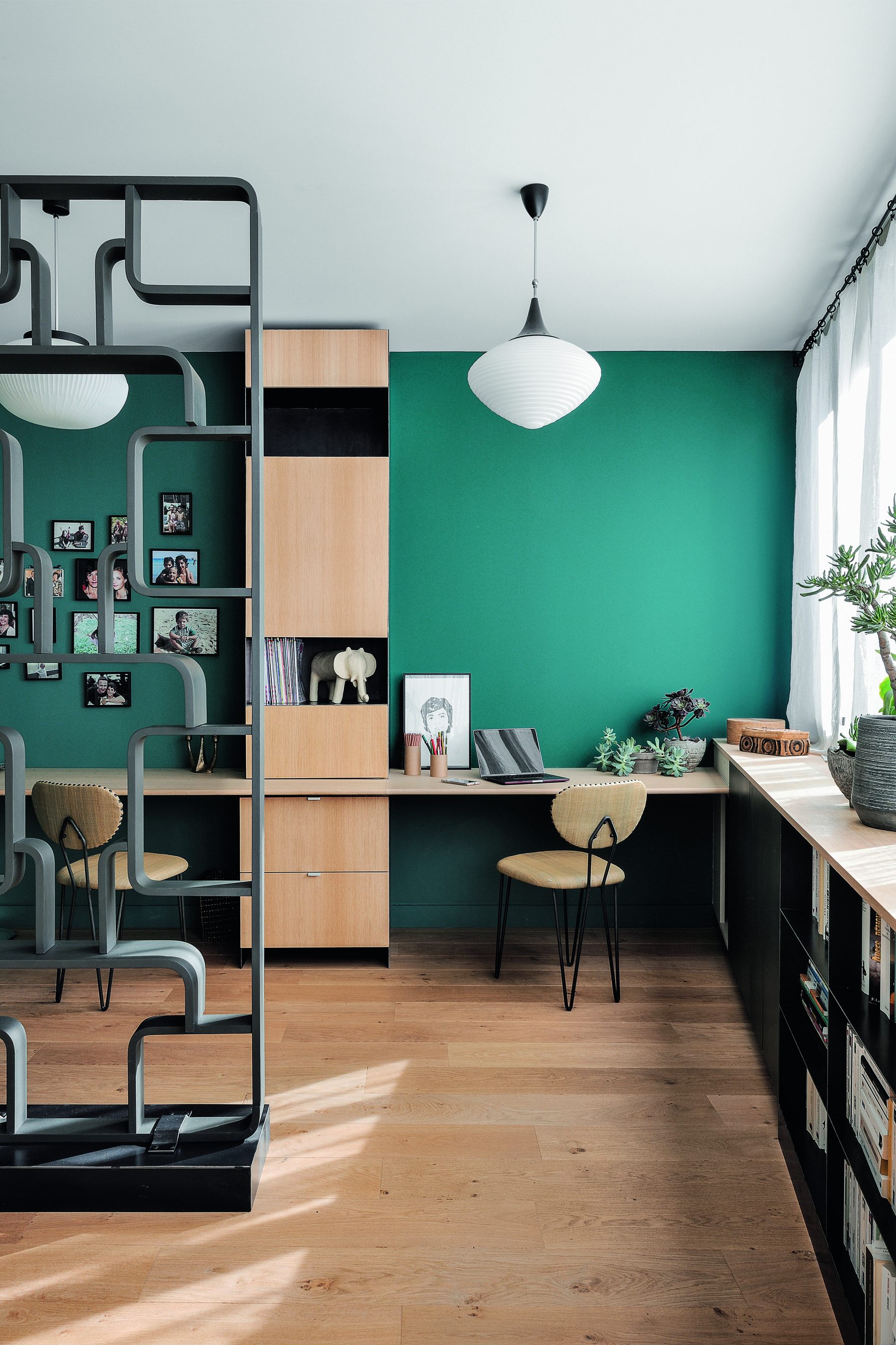This is how much money underfloor insulation could save on your energy bill
If you're in the process of renovating, these flooring experts explain why it's worth installing insulation under your floors in time for winter


Saving money is the one thing on everybody's radar right now. As we approach the cold winter months and energy prices continue to soar, we're all looking for a few ways to cut costs on our heating bill this season. Let's face it, no amount of knitted jumpers and fluffy socks are going to keep you at a comfortable temperature, but one thing that can is effective insulation.
We're pretty certain you'll have insulation up in your loft, and, if you live in a modern home, there's a high likelihood you have it in your walls, too. But did you know that underfloor insulation is one of the best ways to keep your home toasty through the winter?
Although insulated floors are the norm in most new build homes, older buildings are less likely to be as well protected meaning you could be losing precious heat. While you can insulate any floor type, wooden floors are the ideal type of flooring for underfloor insulation. This is because, unlike tiled or carpeted floors, wooden floorboards are easier to remove without causing damage, therefore making it easier to install insulation underneath.
Even though a complete refurb would save you money in the long run, we recognize that in the short term, removing your flooring just to install insulation isn't the most cost-effective option. However, if you're planning to carry out a few home improvement tasks this fall, consider adding underfloor insulation to your list.

Lilith is an expert at following news and trends across the world of interiors. She's committed to helping readers make the best choices in their homes through writing practical tips and guides to help them save a little extra money. For this article she spoke with flooring experts to learn just how much money underfloor insulation could save you on your energy bill this winter.
What is the best type of underfloor insulation?
When it comes to ways to save energy, your typical insulating materials like wool, polyester and fiberglass are the cheapest options for insulating floors. However, if your budget permits, it's worth investing in rigid foam insulation boards like these from Amazon to fix between the joists. This newer type of insulation doesn't absorb water like fiberglass or wool, minimizing the risk of dampness and mold under your home.
Spray foam is also a great option if you have large crawl spaces as it can fill any nook and cranny hiding underneath your floors. Usually, you need to hire a professional to install spray foam, but it often avoids the need to take your floors up altogether.
But just how much is it likely to cost you to install? According to Home Advisor, the average cost of batt insulation per square foot is between $0.30 to $1.50. So, for a 500-square-foot area, your estimate will vary between $150 to $700 depending on the size of your home, if you do it yourself. For a professional job you'll have to add the cost of labor onto that sum, and if you hire a professional to take up your floors, you'll have to take that into account, too.
The Livingetc newsletters are your inside source for what’s shaping interiors now - and what’s next. Discover trend forecasts, smart style ideas, and curated shopping inspiration that brings design to life. Subscribe today and stay ahead of the curve.
On average, the estimate that crawl space insulation costs $1 to $5 per square foot, depending on the type of material used (usually between $500 to $1,500 depending on the size of your home). Spray foam tends to be more expensive, while rigid foam boards are the cheapest option at around $0.25 – $1 per board foot.
How much could it save you on energy bills?
According to Forbes, it's estimated that underfloor insulation could save you up to 10% on your energy bill on average. Of course, this figure is dependent on the age of your home, the type of insulation you install, and the type of heating you rely on (amongst other factors).
Time magazine outlines that households that use natural gas heating (more than half of the homes in the US) can expect their annual bill to increase to $952 on average, accounting for the rise in energy costs. That means, with effective underfloor insulation, you could be looking at a saving of $95 a year.
Which is more effective, solid or engineered wood?

For an added layer of insulation, it's worth giving thought to the right flooring to save money. You might be wondering whether solid or engineered wood flooring is more effective at insulating your home. While they can be difficult to tell apart from a visual perspective, one of these materials is far better at retaining the heat.
'If you’re looking for a floor that in itself is a great insulator of heat, an engineered floor is perfect,' explains Carolina Hansson, Head of Design, at Luxury Flooring & Furnishings. 'Engineered wood is made up from layers of either plywood or MDF and finished off with a surface layer of solid wood. The added layers help to contain heat and keep your floor feeling warm underfoot.'
Unlike solid wood flooring, an engineered floor also has the ability to withstand changes in temperature. 'This means that it won’t expand and contract dramatically meaning the floor can safely be used with higher heating,' Carolina adds. It will also help to make your home more sustainable too.
4 tips for installing underfloor insulation
1. Measure up first
So, you've decided to make the leap and install underfloor insulation to make your house feel warmer, but there are a few things you ought to consider before jumping straight into it.
'Before you start buying packs of flooring insulation, you will need to measure the flooring dimensions,' says Carolina. 'Most flooring insulation comes in sheets or rolls which you can cut at home into the desired shapes for the room.'
As Carolina points out, many people don’t calculate the size of the room relative to the amount of material available in a pack, leading them to waste money and resources. 'Be sure to plan ahead and always order a little extra to close the gaps and any difficult corners of rooms,' she advises. Remember, you only need to insulate your ground floor, so don't account for any upstairs rooms!

2. Use the right protective equipment
When you're installing insulation, it's important you don't skip on the PPE equipment. As Carolina explains: 'If you’re using fiberglass insulation you need to be really careful not to touch it with your bare hands. It’s highly advised to wear work gloves to avoid any discomfort or pain when handling the material, and you should wear a mask to avoid getting any particles in your mouth or nose.'
The same applies for mineral wool insulation, and most other insulation types you buy on a roll. Insulating foam boards however are perfectly safe to handle without protective equipment.
3. Don't forget to insulate around pipes
When it comes to insulating your home we tend to focus on gaps and cavities, like the space between the joists beneath our wood flooring. However, in most cases, there is an entire system of pipes beneath our floors that could benefit from being wrapped with insulation if you're using a material like fiberglass or wool.
'In the current financial climate, you really want to make sure that you’re making the most of the energy you are using so make sure that you lay ample insulation around any heating pipes and radiators,' says Carolina. 'This way you’ll keep them at their optimal temperature and they shouldn’t lose any heat.'

4. Seal any gaps
It goes without saying that for ultimate heat retention, you should make sure to seal any gaps in your floorboards after you've finished laying your insulation.
'If you have particularly old solid wood floors, you may find that they have shifted and there are some gaps in between planks,' Carolina notes. 'I’d advise filling these in where possible, as they can result in draughts and affect the efficiency of your heating.' You can fill these easily on your own using wood filler or wood glue available from Amazon.

Lilith Hudson is a freelance writer and regular contributor to Livingetc. She holds an MA in Magazine Journalism from City, University of London, and has written for various titles including Homes & Gardens, House Beautiful, Advnture, the Saturday Times Magazine, Evening Standard, DJ Mag, Metro, and The Simple Things Magazine.
Prior to going freelance, Lilith was the News and Trends Editor at Livingetc. It was a role that helped her develop a keen eye for spotting all the latest micro-trends, interior hacks, and viral decor must-haves you need in your home. With a constant ear to the ground on the design scene, she's ahead of the curve when it comes to the latest color that's sweeping interiors or the hot new style to decorate our homes.